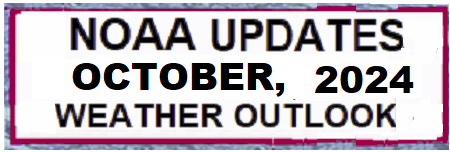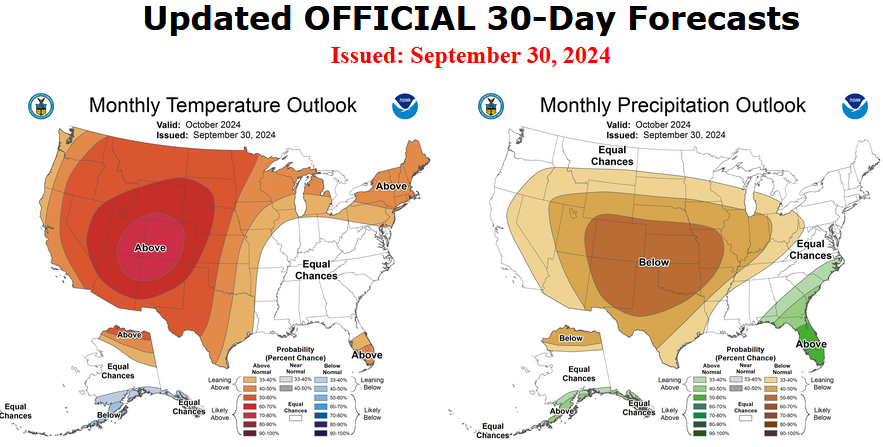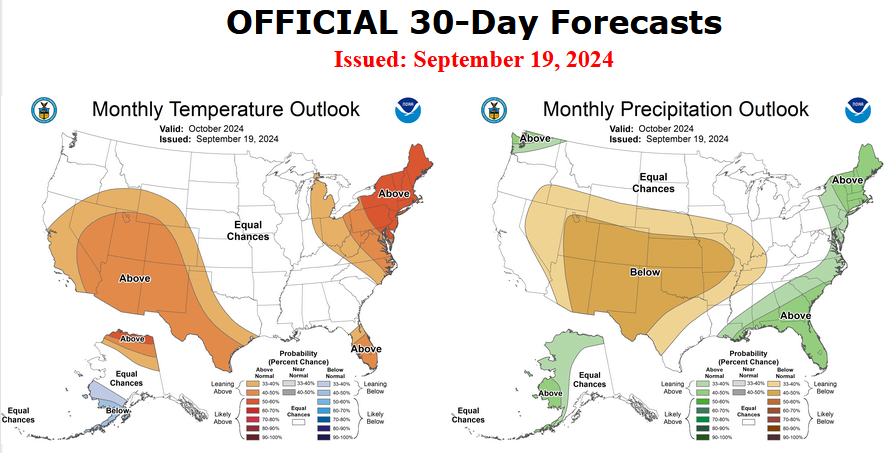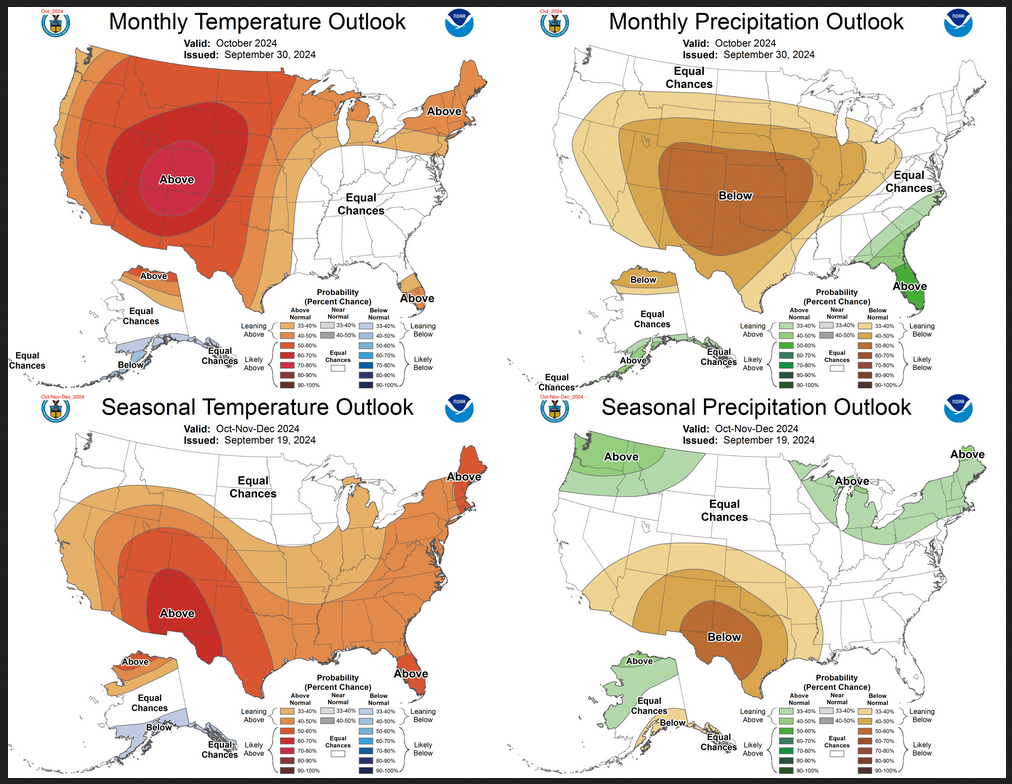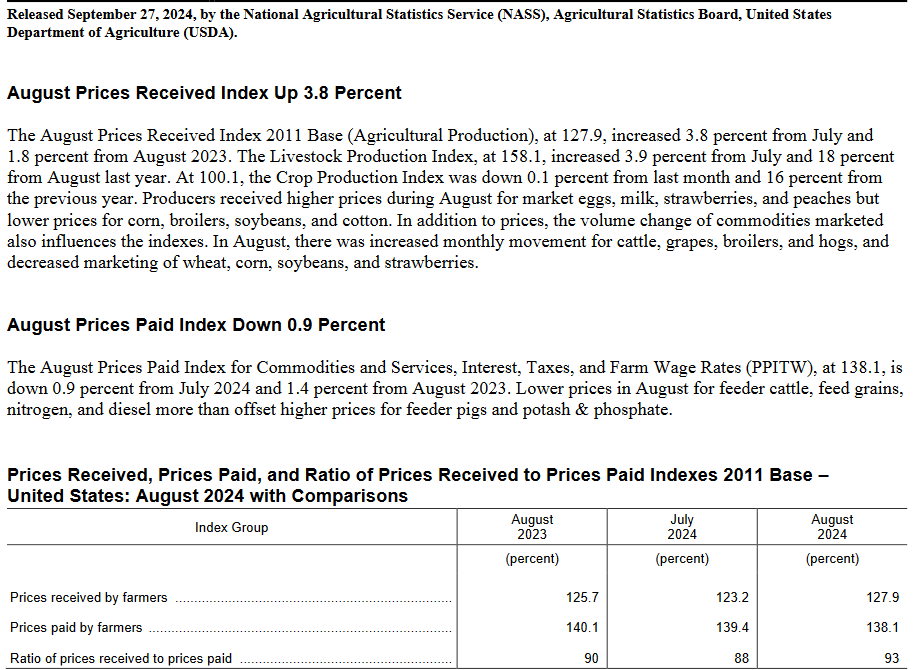Weather Outlook for the U.S. for Today Through at Least 22 Days and a Six-Day Forecast for the World: posted October 3, 2024
This article focuses on what we are paying attention to in the next 48 to 72 hours. The article also includes weather maps for longer-term U.S. outlooks (up to four weeks) and a six-day World weather outlook which can be very useful for travelers.
First the NWS Short Range Forecast. The afternoon NWS text update can be found here after about 4 p.m. New York time but it is unlikely to have changed very much from the morning update. The images in this article automatically update.
Short Range Forecast Discussion
NWS Weather Prediction Center College Park MD
Thu Oct 03 2024
Valid 12Z Thu Oct 03 2024 – 12Z Sat Oct 05 2024…Showers and thunderstorms return to the Gulf Coast from Thursday
evening into Saturday……Rain develops over the Pacific Northwest and scattered showers over
parts of the Midwest, Central/Southern Appalachians, and Northeast……There are Excessive Heat Warnings and Heat Advisories over parts of
Southern California and the Southwest…On Thursday, tropical moisture will start to build over the
Central/Eastern Gulf Coast and Florida. Upper-level energy over the
Western Gulf Coast and Northern Gulf of Mexico will move into parts of the
Southeast and Central Gulf Coast, producing showers and thunderstorms over
parts of the Gulf Coast from Thursday evening into Saturday. In addition,
showers and thunderstorms will develop over parts of Florida through
Saturday. Furthermore, the moisture will also build over the
Central/Southern Appalachians, as upper-level energy moves over the area,
showers and thunderstorms will develop from Thursday afternoon into Friday
evening.Meanwhile, a front extending from the Upper Great Lakes to parts of the
Central Plains will move eastward to just off the Northeast and
Mid-Atlantic Coast by Saturday. The boundary will produce rain with
embedded thunderstorms over parts of the Middle Mississippi Valley on
Friday morning into the early afternoon. As the front moves into the
Northeast and Mid-Atlantic, showers and thunderstorms will develop over
parts of the region late Friday evening into Saturday.In addition, on Friday morning, a second front will move onshore over the
Pacific Northwest, moving to the Northern Plains by Saturday. The system
will produce rain over parts of the Pacific Northwest from Friday into
late Friday evening. Overnight Friday, wet snow will develop over the
highest elevations of the Cascades. The rain will expand into the Northern
Intermountain Region Friday evening into Saturday.Moreover, the upper-level ridge over the Four Corners Region will create
high temperatures over Southern California and the Southwest, ranging from
the upper 90s to 110s. Low temperatures will be in the upper 80s to low
90s, providing little relief from the heat overnight. The temperatures
have prompted Excessive Heat Warnings and Heat Advisories over parts of
Southern California and the Southwest.Record-breaking heat is expected across portions of the Southwest this
week. Moderate to major heat impacts are possible in areas near San
Francisco, Las Vegas, and Los Angeles. Extreme Heat Risk impacts are
forecast for parts of the Southwest. Remember, Heat is the Deadliest
Weather Phenomenon in the U.S.! People spending more time outdoors or in a
building without cooling are at an increased risk of heat-related illness.
Visit www.weather.gov/safety/heat and check local media and government
websites for information on cooling centers.
To get your local forecast plus active alerts and warnings click HERE and enter your city, state or zip code.


